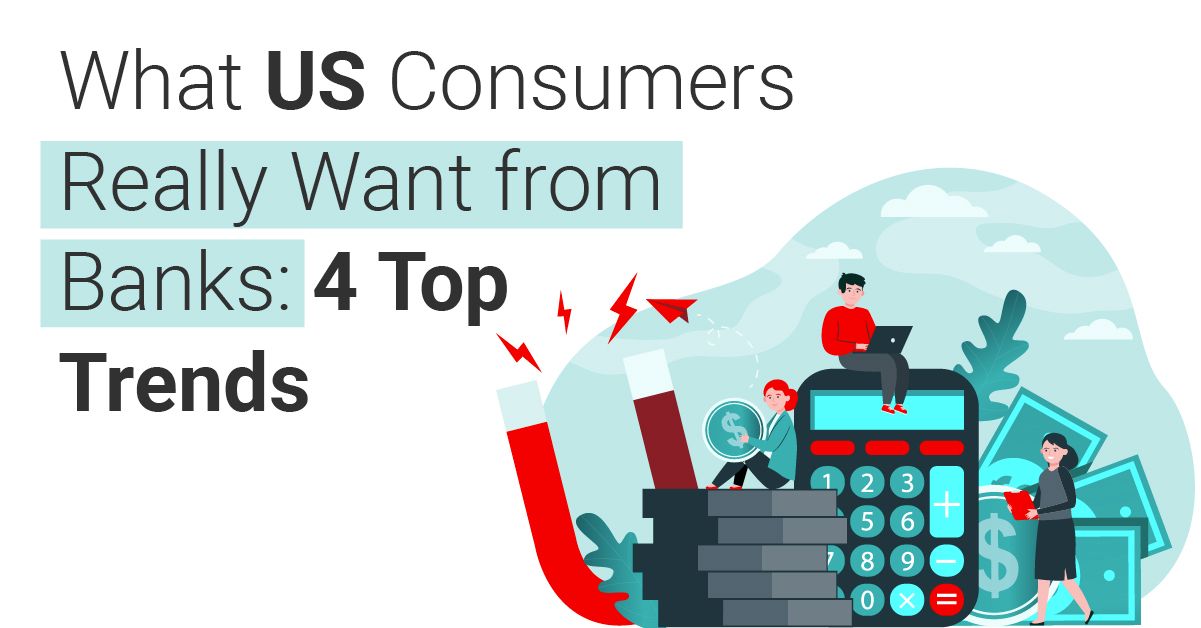
What US Consumers Really Want from Banks: 4 Top Trends
Big banks. Online-only banks. Retail banks. Credit unions. With more lending and banking options and opportunities available, how are US consumers choosing who to bank with?
What does the average American customer look for in a bank?
While seamless, simple-to-follow, and integrated CX (customer experience), primarily via digital apps, still ranks high, surprisingly, personal touch and high-quality customer service may still be the make-or-break factor in the war between traditional and purely digital banking models.
((Let’s unpack the four top consumer trends in banking for 2021 and beyond:((
1. Digital transformation vs personalized customer experience: what wins?
Paint point: Incumbent banks have had to play catch up to their digital adversaries when it comes to banking by touch screen, but the good news is that the average Joe or Josie, still prefers some level of personal human connection. This offers a great way for traditional banks to win back market share.
Solution: Traditional banks need to actively leverage this to retain their customer base. That starts with cohesive staff training and finding a golden mean between Fintech tools and good, old-fashioned human connection and interpersonal skills development. A phone call and a friendly face still go a long way with modern consumers.
2. Empowering customers with easy-to-follow financial tools
Pain point: Studies show that most people often find complex financial terminology intimidating, overwhelming and confusing. They steer away from financial institutions that over complicate their user experience.
Solution: Banks must talk about their banking fees, financial products, interest rates, investment options in an accessible, direct, no-frills, or fluff manner. Again, a personal touch can assist in building a loyal customer base. Banks need to present helpful tips and tools in simple, jargon-free language that provides consumers with clarity and empowers them in working towards realistic financial goals.
3. Banking functionality: integration and speed are key
Paint point: A lack of integration across platforms. Banks must work to ensure that each consumer touchpoint via internet banking, application, informational pamphlets, bank website copy and UX, etc. integrates the same, consistent clear calls to action, clear information on fee structures, options, security, and fraud protection, and mobile/online banking access.
Solution: Different consumers (based on age, tech-savviness, etc.) prefer using different platforms but all banking platforms need to communicate the same message in direct, simple to understand language. When it comes to online or mobile banking and apps, as with any business, the fewer clicks, forms to be filled in, etc. the better.
4. People like banks that embrace sustainability, diversity, and inclusion
Paint point: Traditional banks are still run by white males in top leadership positions and use too much electric power to operate branches.
Solution: With the growing awareness around diversity and inclusion, as well as sustainability and climate change, consumers are attracted to banking institutions that appoint minorities to mid and senior-level management positions and invest in climate mitigation policies through how they operate and how they invest. Incumbent banks need to work to modernize and adapt in this regard – and fast.
5. Conclusion: Banks that empower customers and personalize their offering stay in business
No pain no gain?
Most polls and studies indicate that consumers hate the admin of switching banks and will only do so if banking fees, rates, products and functionality are streets behind those of their closest competitors. Connect with your customer and you’ve got yourself a keeper.
It seems to be just that simple.
Read this Essentials FOM trending article for more information on consumers’ banking needs.